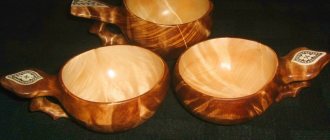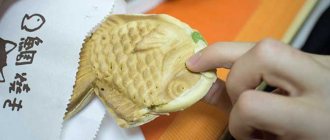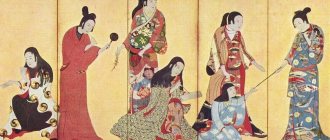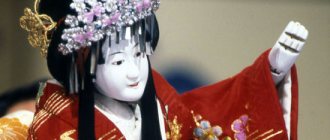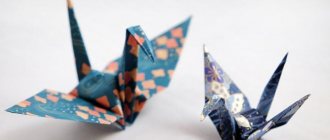If you want to bring originality to your everyday life, start with the aesthetics of food. Make small rituals for yourself in preparing and decorating lunch, which you will then take with you to work or school. This will not only brighten your everyday life, but will also be more economical, healthier and environmentally friendly.
For such a thing, of course, you need inspiration. We recommend learning it from the Japanese. They are the ones who eat with their eyes first, and then taste the food. For them, the visual aesthetics of food is especially important, so they always decorate their food and put it in beautiful dishes or bento lunch boxes. Bento is a huge aspect of Japanese everyday life.
The bento boxes themselves are very compact and beautiful, and eating from them is a pleasure. For such a lunch it was worth waking up earlier, and having eaten, you will definitely have strength and mood for the whole day.
Bento can be very different - cute and colorful, or serious and simple, but generally they contain rice, vegetables, fish or meat and eggs.
We have compiled a selection of the essentials for preparing a Japanese dinner. With this basic set you can prepare bento for every taste, the main thing is not to be afraid and use your imagination
Lunch boxes (special bento boxes)
Bento boxes are the basis of everything. There are a lot of them and they are all different: there are both varnished and thermally insulated.
How to choose a bento box for yourself?
Here you need to pay attention to three factors:
- Your lifestyle
- Material from which the box is made
- Box size
Types of bento boxes
The type of bento box depends on how you get to work or school, as well as where you usually eat lunch.
For example, if you want to fit a lunch box in your small handbag, we recommend “thin” boxes or in Japanese “スリム型” ( surimu kata - thin, slender shape) “弁当箱” ( bentou bako - bento boxes).
If you ride the subway or ride a bicycle, a box that does not leak . In Japanese -汁もれしにくい( shiru morenikui - do not leak) or汁漏れ防止( shiru more boushi ).
- Plastic boxes (プラスチック製)
- Can be heated in the microwave
— Do not leak
- Many different colors and designs
- Stainless steel boxes (ステンレス製)
- They last for many years
— Does not cling to smell or color
— Do not leak if additionally packed in a special bag
- Wooden boxes(木製)
— Food remains tasty even after a while
— Unusual
- Lungs
- Aluminum boxes (アルミ製)
— Do not mold
- Do not spoil
- Lungs
Buy lunch boxes on ZenMarket
Bento
Half of a typical bento consists of rice, and the other half consists of several side dishes made from ingredients such as vegetables, meat, fish and eggs. This format allows for an infinite number of variations. The most common side dish is a boiled egg, such as tamagoyaki (strips or squares of omelette rolled into a roll), scrambled eggs, scrambled eggs, tamago cake gohan, and omelettes with various ingredients. Another perennial bento favorite is sausage. The bento maker sometimes makes small cuts in the sausage to make it look like an octopus or other animal, adding to the enjoyment of the meal.
Other popular dishes include grilled fish, fried meats, fish pie and various vegetables. Vegetables can be pickled, boiled or steamed; Boiled vegetables are consumed more often than fresh ones. For dessert there could be an apple or a tangerine.
One of the bento staples is pickled Japanese apricot, or umeboshi. Believed to prevent rice from spoiling, this traditional food can be placed in a rice ball or on a layer of rice.
Helping poor children in the era of COVID-19. Amazing Japanese mentality.
A person who prepares side dishes for regular family meals often saves some for tomorrow's bento. The wise mother of the family plans the family dinner around items that will make good leftovers for a bento the next day.
The Japanese place great importance on the appearance of their food. Part of the fun of preparing a packed lunch is creating a visually appealing composition that whets the appetite.
Cutlery
There are bento boxes that come with a spoon, fork and chopsticks. But sometimes they need to be purchased separately. There are many different designs in Japan, but for complete aesthetic pleasure, of course it is better to choose what matches your box best.
Plus, using your own cutlery is much more environmentally friendly than constantly buying disposable ones.
Buy cutlery on ZenMarket
Bento is healthy, but it's not easy to prepare it every day
Children, too, can’t go anywhere without a bento - they carry it with them to school and kindergarten, take it on hikes, on excursions, and to undokai sports competitions. Married men and married women working in companies and corporations eat aisai (aifu) bento (loving wife/loving husband's lunch) during their lunch break. There is even a special term bento danshi - it is used in relation to men and boys who prepare their own work or school lunchbox.
Lunchbox, cloth napkin for packaging and chopsticks
Bento is prepared early in the morning. First, the rice is carefully placed in the box, then the accompanying o-kazu dishes are portioned. The assembled box is tied into a cloth napkin, always together with chopsticks or a fork. Sometimes rice and other products are used to create images of characters from popular anime, manga and video games. This design style is called karaben. There are parents who post pictures of karaben-style dinners on their blogs, earning the admiration of other parents. Although others, on the contrary, are indignant because they feel that in this way social pressure is being exerted on them, and not everyone is able to meet such high standards.
For those who find it difficult to make their own bento, you can buy a pre-made lunch box from a konbini, a supermarket, a yatai food truck, the food floor of a large shopping mall, or at restaurants - there are many options, and more and more of them have been popping up lately. A bento purchased at a konbini can be heated in the microwave right there. There are special delivery services that deliver bento to meetings and meetings. Also recently, chains that prepare fresh bento right in front of you have become very popular - you just need to place an order and wait a few minutes until they give you the coveted box of rice, o-kazu and a separate container of miso soup.
Fresh katsuben bento (with chop) in one of the restaurants in the administrative and business district
There are many varieties of bento, ranging from traditional shokado bento, share bento and karaage bento, which are characterized by a selection of typical Japanese dishes combined with rice, to Western-style lunch boxes with steaks, sandwiches and pasta, or assorted bento, where may include different types of noodles, rice with curry sauce and even sushi.
Silicone Baking Cups
Even if you don't plan to bake anything, silicone molds are very convenient for separating different components of your food, such as corn and guacamole that you use as a sauce. They're also ideal if you want to separate dry and wet ingredients or pack multiple snacks.
You can also use paper baking cups, but silicone ones are definitely more convenient.
Buy silicone baking molds on ZenMarket
Story
The earliest records of packed lunches date back to around the fifth century, when people going to the fields, hunting or war took food with them. This was usually dried rice, eaten either dried or soaked in cold or hot water, or rice balls.
According to Nihon Shoki (Chronicles of Japan), one of Japan's oldest historical documents, falconers used bags of food as lunch bags when they went hawk hunting. And Ise Monogatari (Tales of Ise), a 10th-century collection of lyrical stories, contains illustrations of people eating dried rice while traveling.
The word bento is often said to have originated from a sixteenth-century warlord named Oda Nobunaga (1534–1582), who fed large numbers of people in his castle by doling out set portions. The word bento was coined to refer to simple meals that were distributed in this way.
Traditionally, people who worked outdoors - whether in the fields, in the mountains, on fishing boats or in the city - took lunches with them because they did not have time to go home to eat. These packed lunches were usually made with staples such as white rice, rice mixed with millet, or potatoes, depending on the region.
During the Edo period (1603-1868), people considered bento an indispensable addition to outdoor excursions or to the theater. Makunouchi bento, which usually contains small rice balls sprinkled with sesame seeds and a rich assortment of side dishes, became popular during this era. Makunouchi was served between acts of a play, and it is said that bento got its name from the fact that the audience ate it during intermission.
During the Meiji period (1868-1912), when Japan's railway system emerged, ekiben ("station bento", or packed lunches sold at train stations) appeared. The first ekiben - rice balls with pickled apricots inside - was sold in 1885 at Utsunomiya Station in Tochigi Prefecture, according to historians. Ekiben is still sold in huge quantities at Japanese train stations.
Cookie cutters
If you want to breathe even more new life into your lunch, go ahead and grab the cookie cutters! It is very simple and inexpensive and most effective. You can use these cutters to slice anything thin enough, from meat to fruit!
The best thing is that the Japanese have made molds for every taste and color, from basic shapes to cartoon characters.
Buy cookie cutters on ZenMarket
Accessories
Special attention is paid to the design of the bento. Package includes 3 accessories:
- Jubako - box.
- Food sticks.
- Furoshiki - a piece of fabric, a napkin.
It is customary to use a rectangular box with a tight lid to place food. Previously, it was made of wood, varnished, and painted. Nowadays, most Japanese prefer simple plastic containers. As a rule, the internal volume of the box is designed for a serving for 1 person. In rare cases, multi-section jubako are used. They become necessary during group meals, for example, outdoors.
According to Japanese customs, the top of the box is wrapped in cloth. It acts as a knot for transferring the jubako. In addition, during lunch, the knees are covered with cloth to avoid getting dirty. That is, furoshiki serves as a kind of napkin.
The fabric is secured around the box with an elastic band or tape. Place chopsticks under the holder. Thus, each of the packaging elements has several functions.
Ice packs
No room in the office refrigerator? Well, let! With these ice cubes, you can keep your delicious lunch chilled all morning, even if it's hot in the office. Some of these products even come with a strap to attach the bag to your lunch box.
Buy ice packs on ZenMarket
That's it, now you know what you need to make your lunches practical and cozy! Bon appetit
Tell us and show us what bento you tried to make! We are waiting for photos
Write to us on social networks#zenmarket
Rules
Compiling bento is not chaotic. The entire process is carefully thought out and occurs according to a predetermined algorithm. Food is selected according to certain parameters:
- It should be appetizing.
- It has a high calorie content.
- Has an attractive appearance.
- Prepares quickly.
- Products remain fresh for a long time at room temperature.
- Does not require additional cooling or heating.
- Food supplies are designed for meals during the lunch break.
Food delivery to the office allows employees to save time and eat in a convenient environment.
